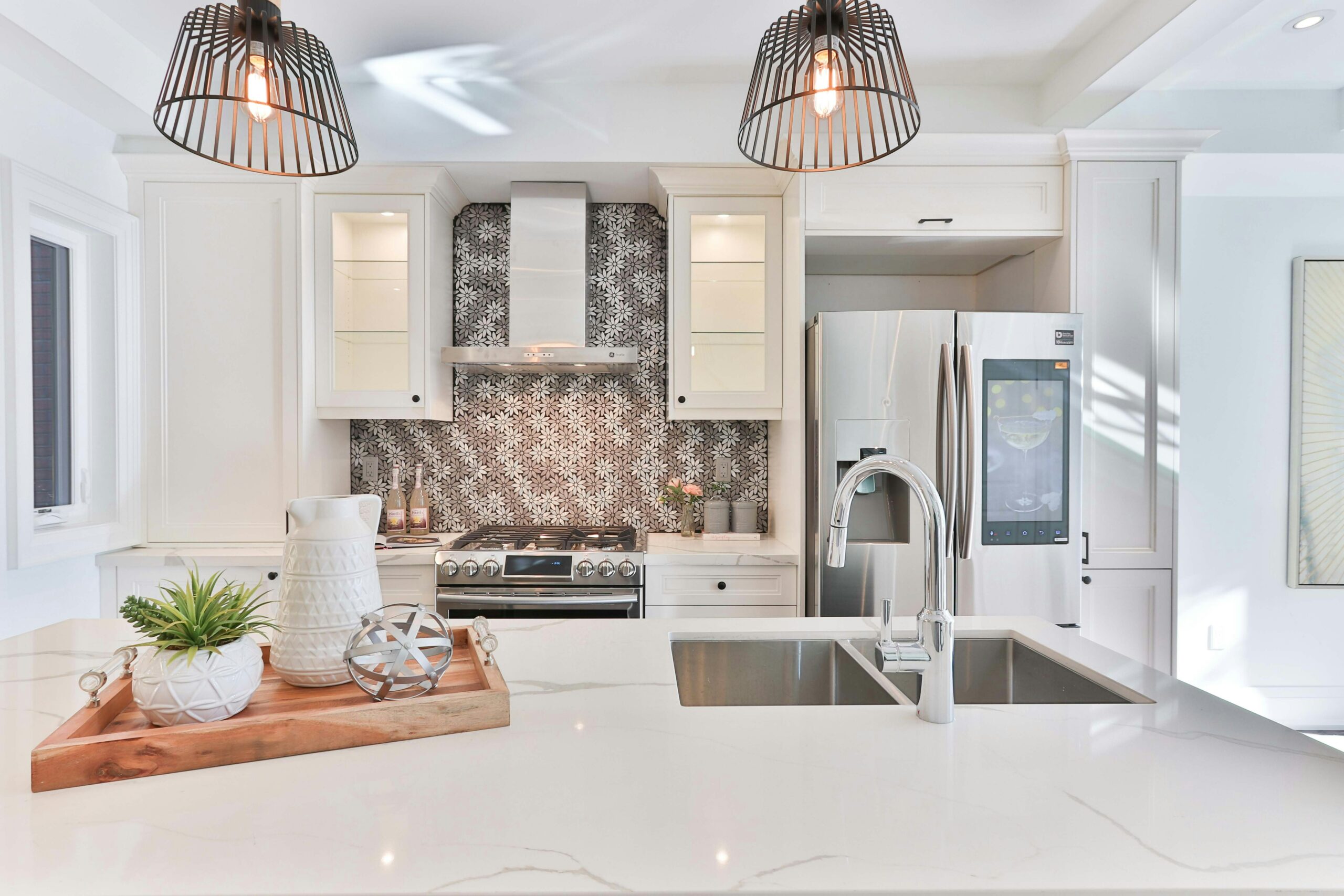When it comes to adding a touch of elegance and style to your kitchen, a backsplash stone for kitchen can make all the difference. A well-chosen backsplash not only protects your kitchen walls from spills and stains, but it also serves as a significant aesthetic element that can powerfully influence the kitchen’s overall look and feel. Over the next sections, we will guide you through everything you need to know about the selection, advantages, installation process, and the different types of kitchen backsplash stones available. We’ll also provide information on how to maintain your backsplash stone, costs and budgeting, as well as tips for enhancing your kitchen aesthetics, eco-friendly options, the durability of different stones, and DIY installation tips. So let’s dig in and explore the wonders of using stone for your kitchen’s backsplash.

Choosing the Right Backsplash Stone for Your Kitchen
When it comes to choosing the right backsplash stone for your kitchen, there are several factors to consider. From the type of stone to its durability and maintenance, each aspect plays a crucial role in creating a functional and aesthetically pleasing kitchen. In this section, we will explore the different aspects to consider when selecting the perfect backsplash stone for your kitchen.
Type of Stone
One of the first decisions to make is the type of stone you want for your kitchen backsplash. There are various options available, such as marble, granite, travertine, and quartz. Each stone has its unique characteristics and appearance, so it’s essential to choose the one that aligns with your style and preferences.
Durability
Another crucial factor to consider is the durability of the backsplash stone. Since the kitchen is a high-traffic area prone to spills, heat, and moisture, it’s essential to choose a stone that can withstand these conditions. Some stones, like granite and quartz, are highly durable and resistant to stains and scratches, making them ideal for kitchen backsplashes.
Maintenance
The maintenance required for your backsplash stone is another important consideration. Some stones may require regular sealing to protect them from stains and moisture, while others may be more low-maintenance. It’s essential to choose a stone that fits your lifestyle and maintenance preferences.
Color and Pattern
The color and pattern of the backsplash stone can significantly impact the overall look of your kitchen. Whether you prefer a neutral and timeless look or a bold and vibrant statement, there are various options available to suit your style. Consider the existing color scheme and design of your kitchen when selecting the color and pattern of the stone.
Budget
Setting a budget for your backsplash stone is crucial to ensure you stay within your means. Different types of stones come with varying price ranges, so it’s essential to consider your budget when making a selection. Keep in mind that investing in a high-quality and durable stone can be a worthwhile long-term investment.
Conclusion
Choosing the right backsplash stone for your kitchen is a decision that requires careful consideration. By taking into account factors such as the type of stone, durability, maintenance, color and pattern, and budget, you can find the perfect stone that will enhance the aesthetics and functionality of your kitchen for years to come.
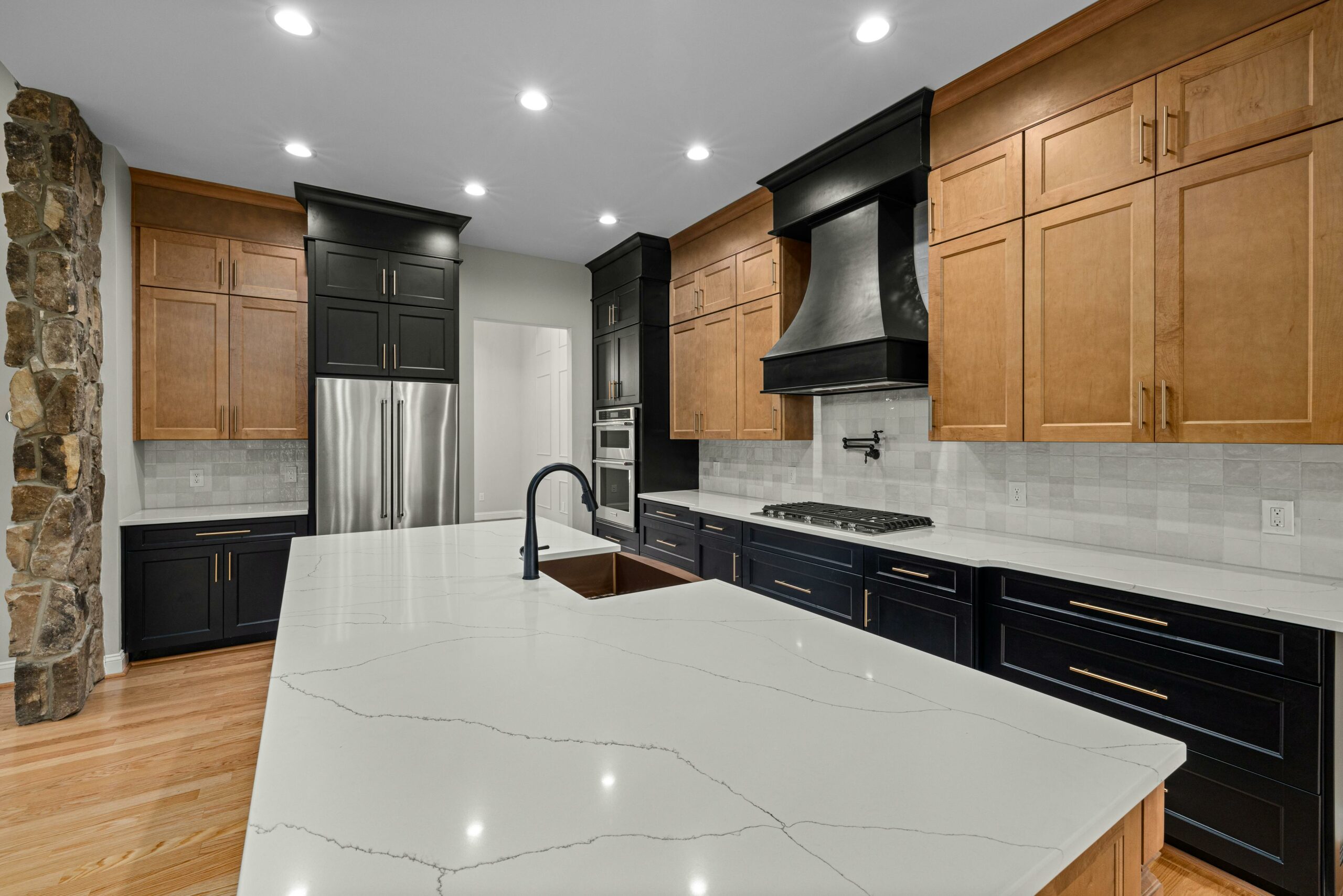
The Advantages of Kitchen Backsplash Stone
When it comes to choosing a backsplash for your kitchen, there are many options to consider. One popular choice is kitchen backsplash stone, which offers a range of advantages that make it a great option for any kitchen. From its durability to its aesthetic appeal, here are some of the advantages of using kitchen backsplash stone:
Durability
One of the biggest advantages of kitchen backsplash stone is its durability. Stone is a strong and sturdy material that can withstand the daily wear and tear of a busy kitchen. It is resistant to scratches, stains, and heat, making it an ideal choice for a backsplash that will last for years to come.
Aesthetic Appeal
Another advantage of kitchen backsplash stone is its aesthetic appeal. Stone has a natural beauty that can enhance the overall look of your kitchen. Whether you choose a sleek and modern granite or a rustic and charming travertine, a stone backsplash can add a touch of elegance and sophistication to your space.
Ease of Maintenance
Kitchen backsplash stone is also easy to maintain. Unlike other materials that may require frequent cleaning or sealing, stone backsplashes are relatively low-maintenance. A simple wipe with a damp cloth is usually all that is needed to keep them looking clean and fresh.
Versatility
Stone backsplashes come in a variety of colors, patterns, and textures, allowing you to find the perfect match for your kitchen design. Whether you prefer a bold and dramatic statement or a subtle and understated look, there is a stone backsplash option that will suit your style.
Increased Home Value
Investing in a kitchen backsplash stone can also increase the value of your home. Stone is a desirable material that is often associated with luxury and quality. Potential buyers will be impressed by the durability and beauty of a stone backsplash, which can help to attract higher offers when it comes time to sell your home.
In conclusion, kitchen backsplash stone offers a range of advantages that make it a popular choice for homeowners. Its durability, aesthetic appeal, ease of maintenance, versatility, and potential for increasing home value make it an excellent option for any kitchen. Consider adding a stone backsplash to your kitchen to enjoy these benefits for yourself.
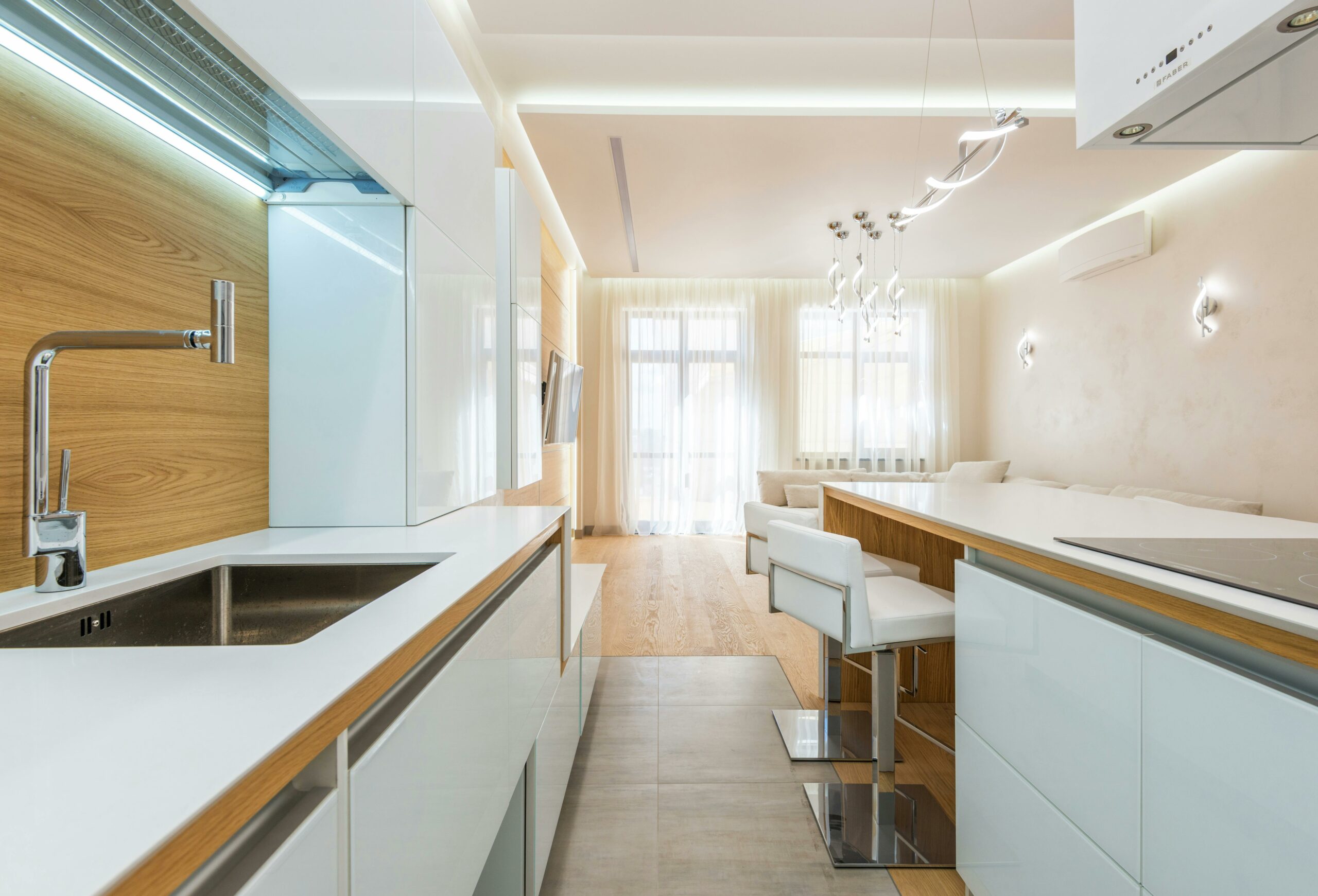
Installation Process for Kitchen Backsplash Stone
Installing a kitchen backsplash stone can be a great way to add beauty and functionality to your kitchen. Follow these steps to ensure a successful installation:
1. Prepare the Surface
Before installing the backsplash stone, make sure the surface is clean and dry. Remove any existing backsplash or wallpaper and repair any cracks or holes in the wall.
2. Measure and Cut the Stone
Measure the area where you will be installing the backsplash and mark the dimensions on the stone. Use a wet saw or tile cutter to cut the stone to the desired size and shape.
3. Apply the Adhesive
Apply a thin layer of adhesive to the back of the stone using a notched trowel. Make sure to cover the entire surface of the stone to ensure proper adhesion.
4. Install the Stone
Press the stone firmly onto the wall, starting from the bottom and working your way up. Use spacers to create even gaps between the stones for grout.
5. Grout the Joints
Once the adhesive has dried, remove the spacers and mix the grout according to the manufacturer’s instructions. Apply the grout to the joints using a grout float, making sure to fill in all the gaps.
6. Clean the Surface
After the grout has dried for about 10-15 minutes, use a damp sponge to wipe away any excess grout from the surface of the stone. Rinse the sponge frequently to ensure a clean finish.
7. Seal the Stone
To protect the stone from stains and moisture, apply a stone sealer according to the manufacturer’s instructions. This will help maintain the beauty and durability of your backsplash stone.
By following these steps, you can successfully install a kitchen backsplash stone and enhance the overall look and functionality of your kitchen.
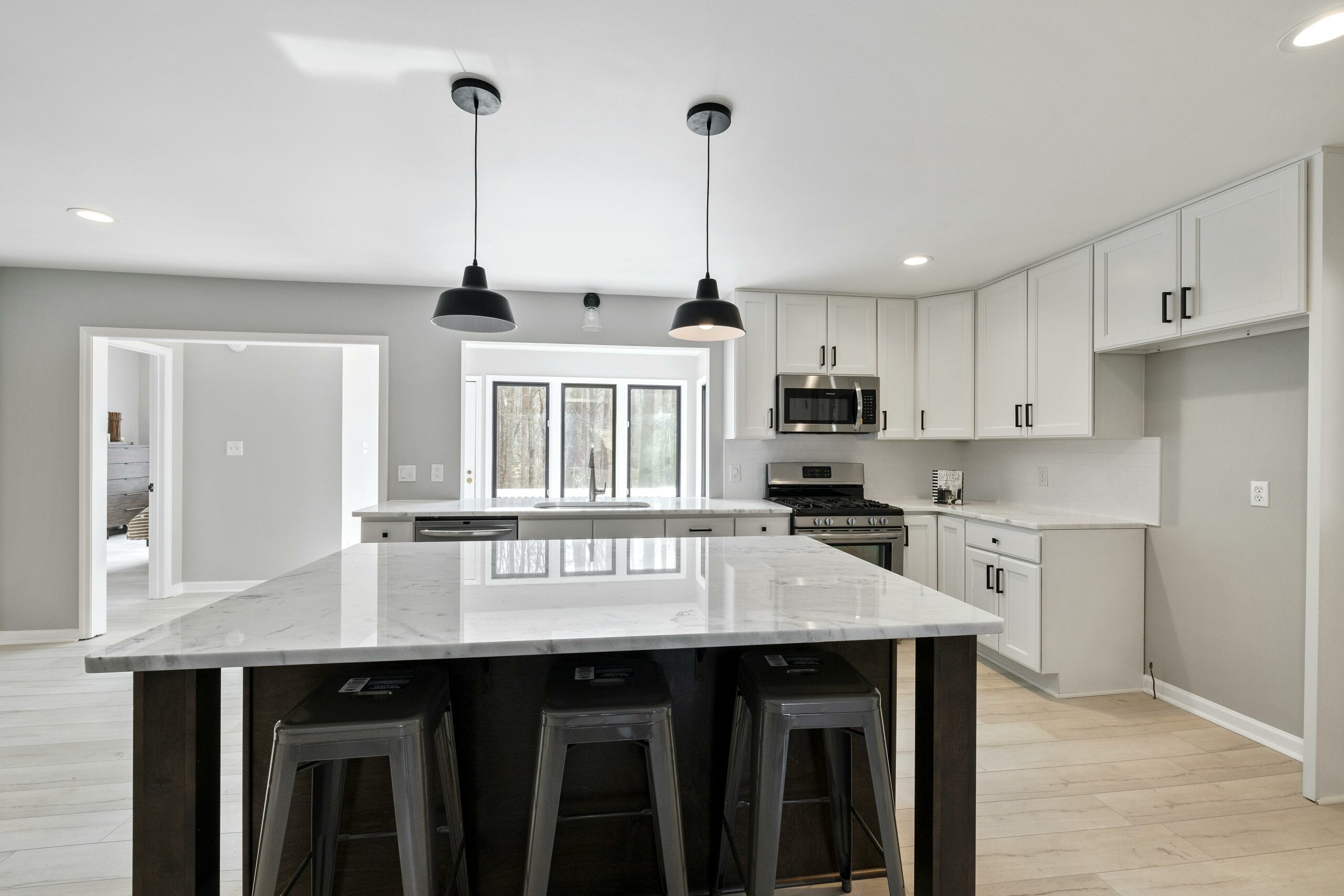
Different Types of Stones for Kitchen Backsplash
When it comes to choosing the perfect stone for your kitchen backsplash, there are many options available. Each type of stone has its own unique characteristics and aesthetic appeal. Here are some of the most popular types of stones used for kitchen backsplashes:
1. Ceramic Tiles
Ceramic tiles are a popular choice for kitchen backsplashes due to their versatility and affordability. They come in a wide range of colors, patterns, and sizes, allowing you to create a customized look for your kitchen.
2. Glass Tiles
Glass tiles are known for their sleek and modern appearance. They reflect light and add a touch of elegance to any kitchen. Glass tiles are available in a variety of colors and finishes, making them a versatile choice for backsplashes.
3. Natural Stone Tiles
Natural stone tiles, such as marble, granite, and travertine, are a popular choice for those looking for a luxurious and timeless look. These stones offer unique patterns and textures, adding depth and character to your kitchen.
4. Porcelain Tiles
Porcelain tiles are known for their durability and resistance to stains and scratches. They come in a variety of colors and finishes, making them a versatile choice for kitchen backsplashes. Porcelain tiles can mimic the look of natural stone, wood, or even metal.
5. Mosaic Tiles
Mosaic tiles are small pieces of stone or glass that are arranged in a pattern to create a unique and eye-catching backsplash. They come in various shapes, sizes, and colors, allowing you to create a personalized design for your kitchen.
6. Stainless Steel
Stainless steel backsplashes are a popular choice for modern and industrial-style kitchens. They are durable, easy to clean, and resistant to heat and moisture. Stainless steel backsplashes add a sleek and contemporary look to any kitchen.
These are just a few examples of the different types of stones available for kitchen backsplashes. Consider your personal style, budget, and maintenance preferences when choosing the perfect stone for your kitchen.
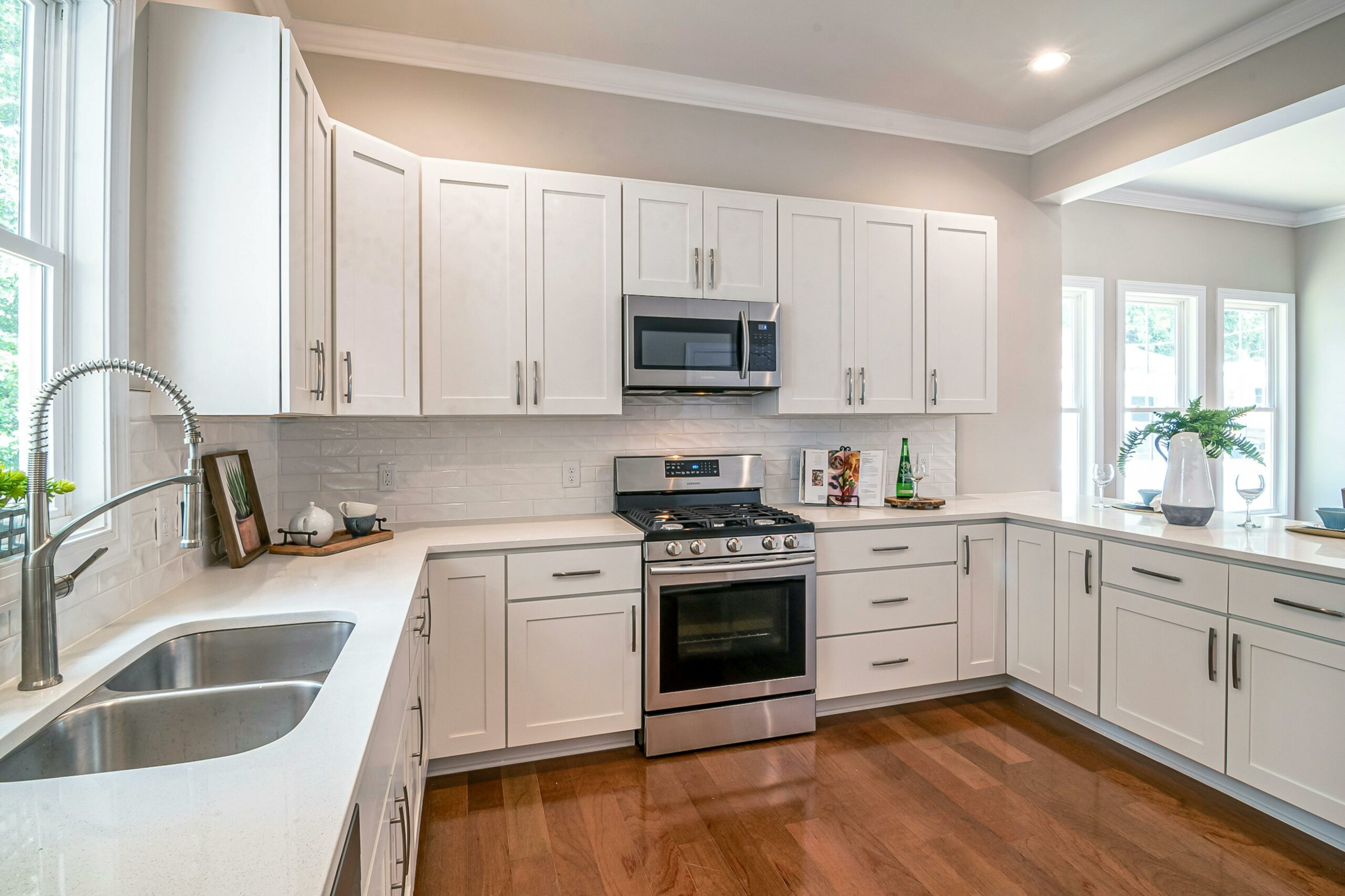
Maintaining Your Backsplash Stone in the Kitchen
Once you have installed a beautiful backsplash stone in your kitchen, it is important to properly maintain it to keep it looking its best. Here are some tips for maintaining your backsplash stone:
Cleaning
-
- Regularly clean the backsplash stone with a mild soap or stone-specific cleaner.
-
- Use a soft cloth or sponge to gently scrub the surface.
-
- Avoid using abrasive cleaners or scrub brushes that can scratch the stone.
-
- Wipe away any spills or stains immediately to prevent them from seeping into the stone.
Sealing
-
- Seal the backsplash stone regularly to protect it from stains and damage.
-
- Choose a high-quality stone sealer that is suitable for the type of stone used in your backsplash.
-
- Follow the manufacturer’s instructions for applying the sealer.
-
- Reapply the sealer as recommended to maintain its effectiveness.
Avoid Harsh Chemicals
Avoid using harsh chemicals or acidic cleaners on your backsplash stone, as they can damage the surface and strip away the protective sealant. Stick to gentle, stone-safe cleaners to keep your backsplash looking its best.
Preventative Measures
-
- Use trivets or hot pads under hot pots and pans to prevent heat damage to the stone.
-
- Place cutting boards under knives to avoid scratching the stone.
-
- Avoid placing heavy objects on the backsplash that could cause cracks or damage.
-
- Regularly inspect the grout lines and repair any cracks or damage to prevent moisture from seeping behind the stone.
By following these maintenance tips, you can ensure that your backsplash stone in the kitchen remains beautiful and in top condition for years to come.
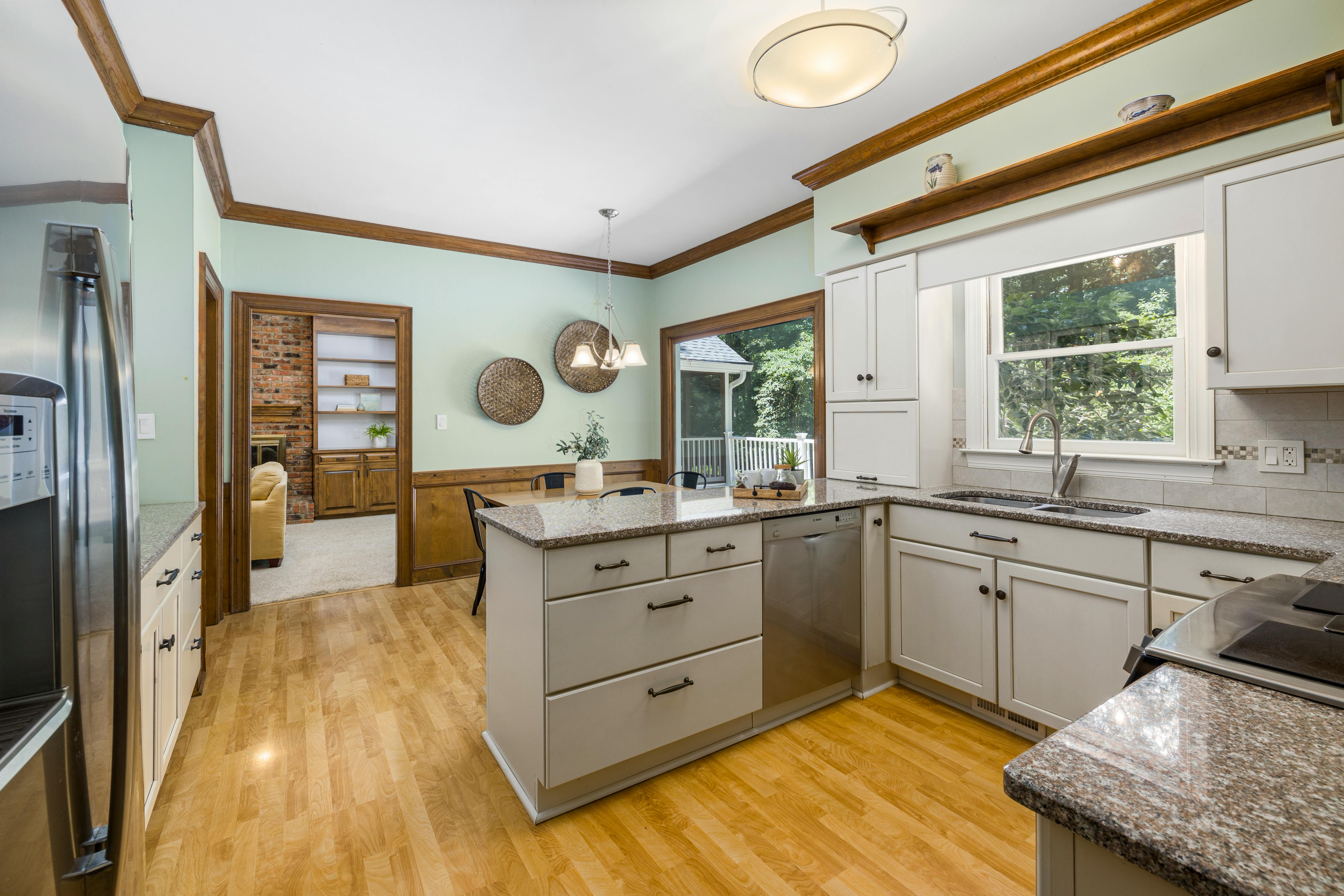
Backsplash Stone for Kitchen: Costs and Budgeting
When it comes to choosing a backsplash stone for your kitchen, it’s important to consider the costs and budgeting involved. The price of the stone and the installation process can vary depending on several factors. In this section, we will discuss the different aspects to consider when budgeting for your kitchen backsplash stone.
1. Stone Selection
The type of stone you choose for your backsplash will greatly impact the overall cost. Natural stones like marble, granite, and travertine tend to be more expensive compared to engineered stones like quartz. Consider your budget and the desired aesthetic when selecting the stone for your kitchen backsplash.
2. Size and Layout
The size and layout of your kitchen backsplash will also affect the cost. Larger backsplashes require more materials and labor, which can increase the overall budget. Additionally, intricate designs or patterns may require more time and expertise to install, resulting in higher costs.
3. Installation Costs
The installation process for a backsplash stone involves labor costs. It’s important to hire a professional installer who has experience working with stone to ensure a proper and long-lasting installation. The cost of labor can vary depending on the complexity of the project and the location.
4. Additional Materials
In addition to the stone itself, there are other materials required for the installation of a kitchen backsplash. This includes adhesive, grout, and sealant. These additional materials should be factored into your budget to ensure a smooth and successful installation process.
5. Maintenance and Upkeep
Consider the long-term maintenance and upkeep costs when budgeting for your kitchen backsplash stone. Some stones require regular sealing or special cleaning products, which can add to the overall expenses over time. Research the maintenance requirements of the chosen stone to understand the ongoing costs involved.
By considering these factors and setting a realistic budget, you can ensure that your kitchen backsplash stone project stays within your financial means. Remember to prioritize quality and durability to make the most out of your investment.
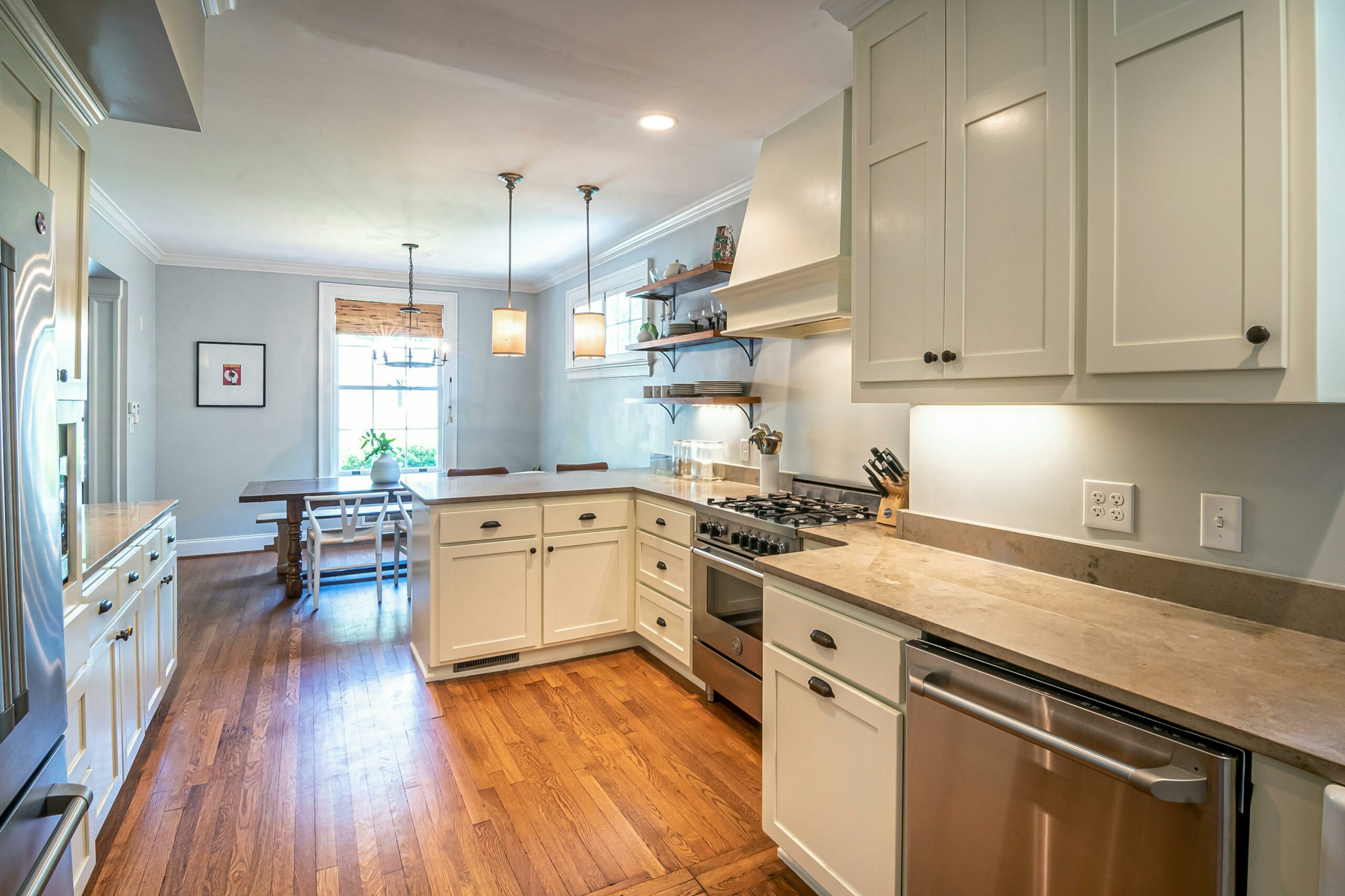
Enhancing Kitchen Aesthetics with Backsplash Stone
Adding a backsplash stone to your kitchen can greatly enhance its overall aesthetics. Not only does it provide a beautiful focal point, but it also serves a practical purpose by protecting your walls from stains and splatters. With a wide variety of stones to choose from, you can easily find one that complements your kitchen’s style and color scheme.
Benefits of Backsplash Stone
There are several advantages to using backsplash stone in your kitchen. Firstly, it adds a touch of elegance and sophistication to the space. The natural beauty and unique patterns of the stone can instantly elevate the look of your kitchen. Additionally, backsplash stone is highly durable and long-lasting, ensuring that it will withstand the test of time.
Another benefit of using backsplash stone is its versatility. With a wide range of colors and textures available, you can easily find a stone that matches your kitchen’s design. Whether you prefer a sleek and modern look or a rustic and traditional style, there is a backsplash stone that will suit your taste.
Installation Process
The installation process for backsplash stone in the kitchen may vary depending on the type of stone you choose. However, the general steps include preparing the wall surface, applying adhesive, placing the stone tiles, and grouting the gaps. It is recommended to hire a professional for the installation to ensure a seamless and professional finish.
Maintenance of Backsplash Stone
To keep your backsplash stone looking its best, regular maintenance is required. This includes cleaning the surface with a mild detergent and warm water, avoiding abrasive cleaners that can damage the stone. It is also important to seal the stone periodically to protect it from stains and moisture.
Enhancing Your Kitchen’s Style
Backsplash stone can greatly enhance the style of your kitchen. Whether you choose a sleek and modern stone or a rustic and natural one, it will instantly add character and charm to the space. The color and texture of the stone can be used to create a focal point or to complement the existing design elements in your kitchen.
Additionally, backsplash stone can be used to create a cohesive look by matching it with other stone elements in your kitchen, such as countertops or flooring. This creates a harmonious and visually appealing space that will impress your guests and make your kitchen a truly standout area in your home.
In conclusion, adding a backsplash stone to your kitchen is a great way to enhance its aesthetics. With its beauty, durability, and versatility, backsplash stone can transform your kitchen into a stunning and functional space. Consider the various types of stones available, the installation process, and the maintenance required to ensure that your backsplash stone remains a beautiful and long-lasting addition to your kitchen.
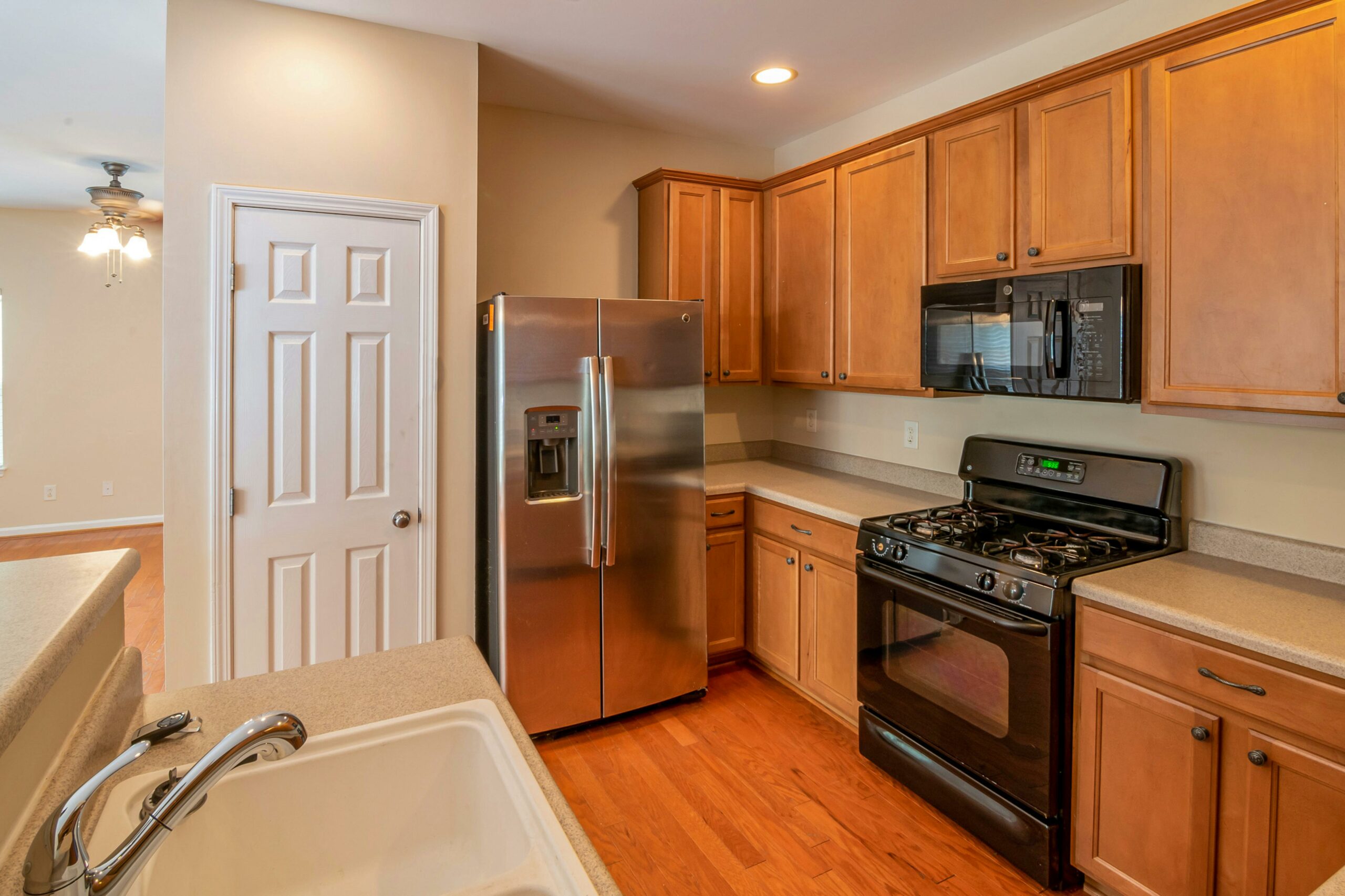
Eco-Friendly Backsplash Stone Options for the Kitchen
When it comes to choosing a backsplash stone for your kitchen, it’s important to consider not only its aesthetic appeal but also its impact on the environment. Luckily, there are several eco-friendly options available that can enhance the beauty of your kitchen while minimizing your carbon footprint.
Natural Stone
One of the most popular eco-friendly options for kitchen backsplash is natural stone. Natural stones like granite, marble, and slate are not only durable and long-lasting but also sustainable. These stones are sourced from the earth and can be recycled or repurposed after use. Additionally, natural stone requires minimal processing, reducing energy consumption and waste.
Recycled Glass
Another eco-friendly option for kitchen backsplash is recycled glass. This material is made from post-consumer glass bottles and other glass products, reducing the amount of waste sent to landfills. Recycled glass backsplash not only adds a unique and modern touch to your kitchen but also helps conserve natural resources.
Bamboo
Bamboo is a renewable and sustainable material that can be used as a backsplash in the kitchen. It grows quickly and can be harvested without causing any damage to the environment. Bamboo backsplash adds a natural and earthy element to your kitchen while being eco-friendly.
Cork
Cork is another eco-friendly option for kitchen backsplash. It is made from the bark of cork oak trees, which can be harvested without cutting down the tree. Cork is a renewable resource and its production process has a minimal impact on the environment. Cork backsplash not only provides a unique and textured look to your kitchen but also offers insulation and sound absorption properties.
Reclaimed Wood
Using reclaimed wood as a backsplash in your kitchen is not only eco-friendly but also adds a rustic and vintage charm to the space. Reclaimed wood is sourced from old buildings, barns, or other structures, giving it a unique character. By using reclaimed wood, you are giving new life to materials that would otherwise end up in a landfill.
Conclusion
When choosing a backsplash stone for your kitchen, consider opting for eco-friendly options like natural stone, recycled glass, bamboo, cork, or reclaimed wood. These materials not only enhance the beauty of your kitchen but also contribute to a more sustainable and environmentally friendly home.

The Durability of Different Kitchen Backsplash Stones
When choosing a kitchen backsplash stone, durability is a crucial factor to consider. The backsplash is exposed to heat, moisture, and daily wear and tear, so it’s essential to select a stone that can withstand these conditions. Here are some of the most durable kitchen backsplash stones:
1. Granite
Granite is known for its exceptional durability. It is a natural stone that is resistant to scratches, heat, and stains. This makes it an excellent choice for a kitchen backsplash, as it can handle the demands of daily cooking and cleaning.
2. Quartz
Quartz is another highly durable option for a kitchen backsplash. It is an engineered stone that is made by combining natural quartz with resins and pigments. Quartz is non-porous, which means it is resistant to stains and bacteria. It is also heat-resistant and scratch-resistant, making it a practical choice for a busy kitchen.
3. Porcelain
Porcelain is a versatile and durable material that is commonly used for kitchen backsplashes. It is made from a mixture of clay and other minerals, which is then fired at high temperatures. Porcelain is highly resistant to heat, scratches, and stains. It is also easy to clean and maintain, making it a popular choice for homeowners.
4. Marble
Marble is a timeless and elegant option for a kitchen backsplash. While it is not as durable as granite or quartz, it can still withstand normal kitchen use. However, marble is more prone to scratches and stains, so it requires regular sealing and maintenance to keep it looking its best.
5. Travertine
Travertine is a natural stone that is known for its durability and unique appearance. It is formed from limestone and has a porous texture. While it is not as resistant to stains as granite or quartz, travertine can still withstand the demands of a kitchen backsplash with proper care and maintenance.
When choosing a kitchen backsplash stone, it’s important to consider not only its durability but also its aesthetic appeal and how it complements the overall design of your kitchen. By selecting a durable stone, you can ensure that your kitchen backsplash will stand the test of time and continue to enhance the beauty of your space for years to come.
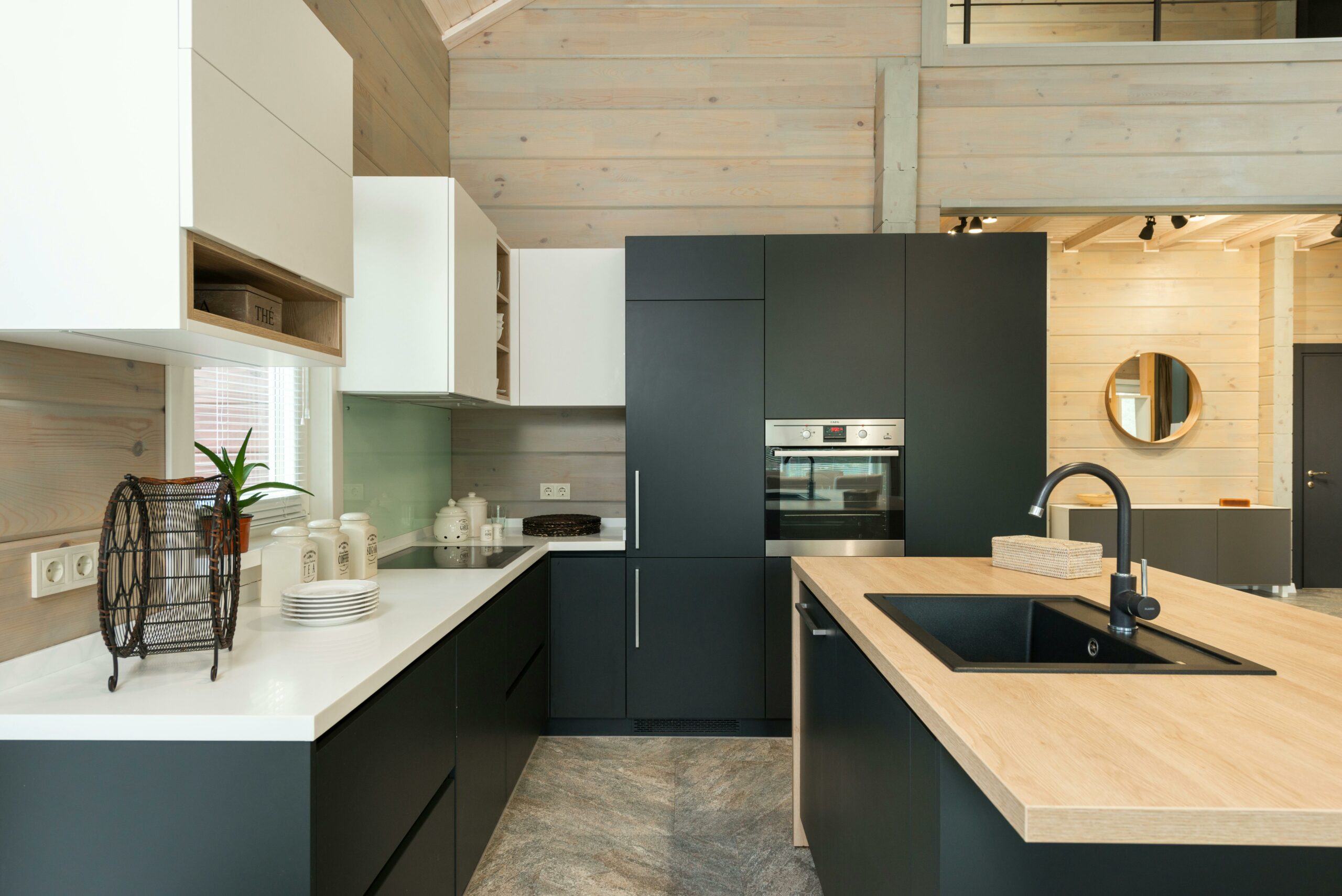
DIY Tips for Installing Your Kitchen Backsplash Stone
Installing a kitchen backsplash stone can be a rewarding DIY project that adds beauty and functionality to your kitchen. Here are some tips to help you successfully install your kitchen backsplash stone:
1. Prepare the Surface
Before you begin installing the backsplash stone, make sure the surface is clean, dry, and free of any debris. Use a mild cleanser and a sponge to remove any grease or dirt. If there are any loose tiles or damaged areas, repair them before starting the installation.
2. Measure and Plan
Measure the area where you will be installing the backsplash stone and plan the layout. Consider the size and shape of the tiles, as well as any patterns or designs you want to create. It’s a good idea to sketch out your design on paper before starting the installation.
3. Gather the Right Tools and Materials
Make sure you have all the necessary tools and materials for the installation. This may include a trowel, notched trowel, tile spacers, tile adhesive, grout, grout float, sponge, and a tile cutter. Having everything you need on hand will make the installation process smoother.
4. Start from the Center
Begin the installation from the center of the backsplash area. Apply a layer of tile adhesive to the wall using a trowel or notched trowel, then press the first tile into place. Use tile spacers to ensure even spacing between the tiles. Continue applying adhesive and placing tiles until you reach the edges of the backsplash area.
5. Cut Tiles as Needed
If you need to cut tiles to fit around corners, outlets, or other obstacles, use a tile cutter or a wet saw. Measure the area that needs to be cut, mark the tile, and carefully cut it using the appropriate tool. Take your time and make precise cuts to ensure a professional-looking installation.
6. Apply Grout
Once all the tiles are in place and the adhesive has dried, it’s time to apply the grout. Mix the grout according to the manufacturer’s instructions and use a grout float to spread it over the tiles. Make sure to fill in all the gaps between the tiles. Wipe off any excess grout with a damp sponge.
7. Seal the Grout
To protect the grout from stains and moisture, apply a grout sealer after it has dried. Follow the instructions on the sealer packaging for the best results. This will help keep your backsplash stone looking clean and fresh for years to come.
By following these DIY tips, you can successfully install your kitchen backsplash stone and create a beautiful and functional addition to your kitchen.

